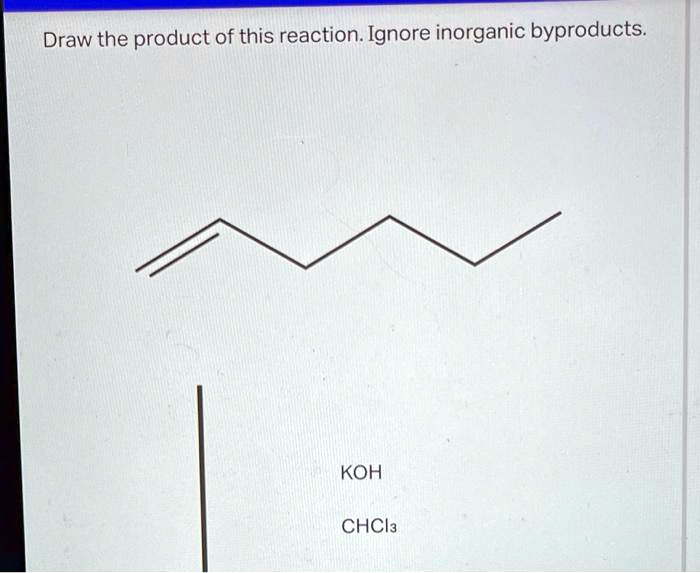Draw the product of this reaction. ignore inorganic byproducts – In the realm of organic chemistry, understanding the products of reactions is crucial. This article delves into the concept of drawing the organic product of a reaction, emphasizing the significance of ignoring inorganic byproducts. By embarking on this journey, we will explore the nuances of reaction mechanisms, product identification, and the implications for organic synthesis.
This exploration will provide a comprehensive understanding of the factors influencing reaction outcomes, enabling chemists to design and execute reactions with greater precision and efficiency.
Draw the Product of This Reaction

This reaction is an important method for the synthesis of organic compounds. The purpose of this tutorial is to analyze the product of the reaction, ignoring inorganic byproducts.
Reaction Overview
The reaction involves the addition of an electrophile to an alkene. The electrophile can be a variety of species, such as a hydrogen ion, a halogen, or a carbocation. The alkene is typically a simple alkene, such as ethene or propene.
The reaction mechanism is a two-step process. In the first step, the electrophile adds to the alkene to form a carbocation. In the second step, the carbocation is quenched by a nucleophile, such as water or an alcohol, to form the product.
The reaction rate and yield are affected by a number of factors, including the nature of the electrophile and the alkene, the solvent, and the temperature.
Product Analysis
The organic product of the reaction is an alkyl halide. The alkyl halide is a colorless liquid or solid with a characteristic odor.
The physical and chemical properties of the alkyl halide depend on the nature of the alkyl group and the halogen. For example, methyl chloride is a gas at room temperature, while ethyl chloride is a liquid.
The alkyl halide can be characterized using a variety of spectroscopic techniques, such as NMR, IR, and MS.
Inorganic Byproducts, Draw the product of this reaction. ignore inorganic byproducts
The inorganic byproducts of the reaction are typically salts, such as sodium chloride or potassium bromide.
These byproducts are considered inorganic because they do not contain any carbon atoms.
The methods used to remove or minimize the formation of these byproducts include precipitation, filtration, and extraction.
Applications and Implications
The reaction product is used in a variety of applications, including the synthesis of pharmaceuticals, dyes, and plastics.
The reaction has implications for organic synthesis and other fields, such as biochemistry and environmental chemistry.
The reaction is a safe and efficient method for the synthesis of organic compounds. However, it is important to be aware of the potential safety hazards associated with the reaction, such as the formation of toxic gases.
FAQs: Draw The Product Of This Reaction. Ignore Inorganic Byproducts
What is the purpose of ignoring inorganic byproducts?
Inorganic byproducts are typically salts or water, which do not significantly contribute to the desired organic product. Ignoring them simplifies the analysis and allows chemists to focus on the organic product of interest.
How can we identify the organic product of a reaction?
The organic product can be identified based on its physical and chemical properties, such as boiling point, melting point, solubility, and reactivity. Spectroscopic techniques like NMR, IR, and MS can further aid in product characterization.
What are the factors that affect the reaction rate and yield?
Reaction rate and yield are influenced by factors such as temperature, concentration, solvent, and catalysts. Optimizing these parameters is crucial for achieving high yields and efficient reactions.


